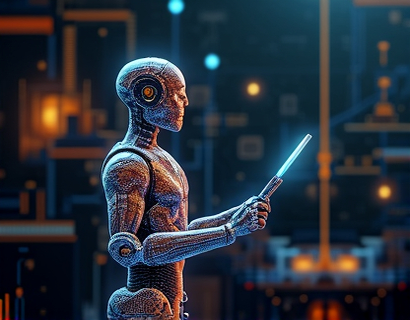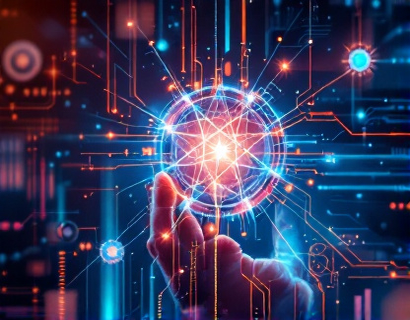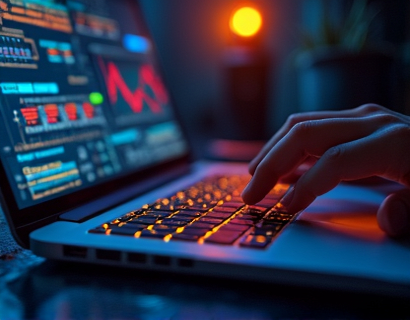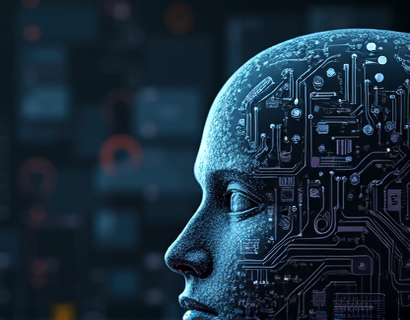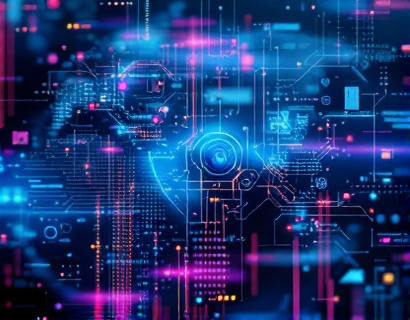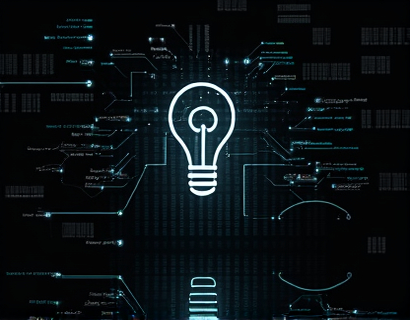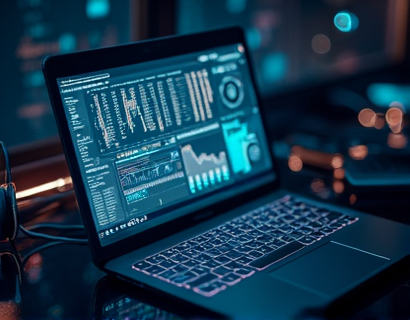Unleashing Advanced Ecosystem Solutions: The Synergy of AI and Crypto for Digital Innovation
The intersection of artificial intelligence (AI) and cryptocurrency is giving rise to a new era of digital innovation, transforming the way we interact with crypto applications and services. This fusion is not just a technological advancement but a paradigm shift that is redefining the crypto landscape. For tech-savvy enthusiasts and innovators, understanding this synergy is crucial to harnessing the full potential of the digital ecosystem. This article delves into the advanced technologies and innovative strategies that are revolutionizing the crypto space, offering insights into how these synergies are elevating digital journeys and unlocking new potentials.
The integration of AI in the crypto domain is multifaceted, impacting various aspects from security and trading to user experience and decentralized applications (dApps). AI algorithms, with their ability to process vast amounts of data at unprecedented speeds, are enhancing the efficiency and reliability of crypto systems. One of the primary areas where AI is making a significant impact is in security. Cryptocurrencies, by their nature, are vulnerable to various types of attacks, including smart contract vulnerabilities, phishing, and 51% attacks. AI-driven security solutions can detect and mitigate these threats in real-time, providing a robust defense mechanism for crypto assets.
Machine learning (ML), a subset of AI, plays a pivotal role in identifying patterns and anomalies that traditional security measures might miss. For instance, AI can analyze transaction patterns to identify suspicious activities and flag potential fraud before it occurs. This proactive approach to security is essential in a space where the stakes are high and the consequences of a breach can be devastating. Moreover, AI can enhance the security of smart contracts by automatically scanning code for vulnerabilities and suggesting fixes, thereby reducing the risk of exploits.
Beyond security, AI is revolutionizing the trading landscape in the crypto market. Algorithmic trading, powered by AI, allows for more sophisticated and efficient trading strategies. AI algorithms can analyze market data, news feeds, and social media sentiment to make informed trading decisions. These algorithms can execute trades at optimal times, capitalizing on market movements that human traders might miss. This not only increases the potential for higher returns but also reduces the emotional bias that often affects human decision-making.
Another significant application of AI in crypto trading is in the prediction of market trends. By leveraging historical data and advanced statistical models, AI can forecast price movements with a degree of accuracy that surpasses traditional methods. This predictive capability is invaluable for both individual traders and institutional investors looking to make strategic decisions. However, it's important to note that while AI can provide insights, the crypto market remains highly volatile, and no system can guarantee success.
The user experience in the crypto ecosystem is also being transformed by AI. User interfaces (UIs) are becoming more intuitive and personalized, thanks to AI-driven design and interaction models. For example, AI can analyze user behavior and preferences to tailor the UI, making it easier for users to navigate and access the features they need. This personalized approach not only enhances usability but also increases user engagement and satisfaction.
Furthermore, AI-powered chatbots and virtual assistants are becoming common in crypto platforms, providing 24/7 support and guidance to users. These AI-driven assistants can answer queries, guide users through complex processes, and even offer investment advice, all in real-time. This level of support is particularly valuable in a space where users often face technical challenges and need immediate assistance.
Decentralized applications (dApps) are another area where AI and crypto are converging to create innovative solutions. dApps leverage blockchain technology to offer decentralized alternatives to traditional applications, ensuring transparency, security, and user control. AI enhances dApps by providing intelligent functionalities that traditional dApps lack. For instance, AI can power recommendation engines within dApps, suggesting products or services based on user preferences and behavior. This not only improves the user experience but also drives engagement and retention.
In the realm of decentralized finance (DeFi), AI is enabling the creation of more sophisticated financial instruments and services. AI-driven lending and borrowing platforms can assess creditworthiness more accurately by analyzing a broader range of data points, including non-traditional credit signals. This democratizes access to financial services, making them available to a wider audience, including those in underbanked regions.
Another exciting development is the use of AI in yield optimization for DeFi protocols. AI algorithms can dynamically allocate assets across various DeFi platforms to maximize returns while managing risk. This automated optimization ensures that users can achieve better returns without the need for constant monitoring and manual adjustments.
The synergy between AI and crypto is not limited to backend technologies; it is also transforming the way crypto projects are developed and managed. Blockchain development itself is becoming more efficient with the help of AI tools. For example, AI can assist in code generation, reducing the time and effort required to build smart contracts and dApps. These tools can detect potential bugs and vulnerabilities, ensuring that the code is not only functional but also secure.
Moreover, AI can facilitate the governance of decentralized projects by analyzing community sentiment and predicting the outcomes of proposals. This data-driven approach to governance can lead to more informed and consensus-driven decision-making, enhancing the overall health and sustainability of decentralized communities.
The integration of AI and crypto is also opening up new possibilities in the realm of digital identity and privacy. AI-powered identity verification systems can ensure that transactions and interactions within the crypto ecosystem are secure and compliant with regulatory requirements. At the same time, blockchain's inherent privacy features, combined with AI-driven encryption techniques, can provide users with greater control over their personal data.
As the crypto landscape continues to evolve, the role of AI will only become more prominent. The combination of AI's analytical prowess and crypto's decentralized, transparent nature is creating a powerful ecosystem that is poised to drive significant innovation. For those looking to stay ahead in this rapidly changing field, understanding the interplay between AI and crypto is essential.
In conclusion, the fusion of AI and cryptocurrency is not just a technological trend but a fundamental shift in how we approach digital interactions and financial systems. By leveraging the strengths of both technologies, we can build more secure, efficient, and user-friendly crypto applications and services. As we move forward, the potential for further innovation and transformation in the crypto space is immense, offering endless opportunities for tech-savvy enthusiasts and innovators to explore and contribute to this exciting frontier.





